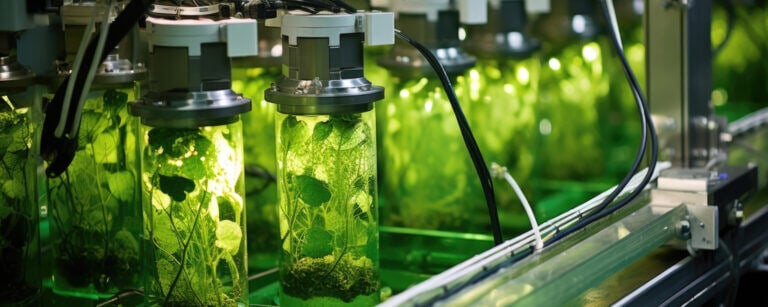Life sciences companies such as pharmaceutical, medical technology, and digital health management, all hold vast amounts of important, highly sought-after data in the cybercrime world. Cybercrimes can be damaging for any type of business, but data breaches for life sciences organizations can be particularly devastating because of the nature of the data. Intellectual property and Protected Health Information (PHI) are both incredibly valuable forms of information.
Life sciences and health care organizations are in the midst of a critical period for managing cybersecurity because the threat landscape is becoming vaster and more complex by the day, making cyber environments more difficult to manage. According to SecurityMagazine.com, 70% of life sciences respondents have seen an increase in data loss incidents caused by insiders. Adding to these challenges are rising costs and talent shortages within the cyber professional pool. Life sciences IT departments are being asked to do much more with less, and so the need for third-party risk management is growing.

Understanding the Risks:
The life sciences industry faces a myriad of cybersecurity risks, including:
Data Breaches: The theft or unauthorized access of sensitive patient data can lead to breaches with far reaching consequences, including reputational damage, legal repercussions, and financial losses.
Ransomware Attacks: Ransomware attacks, where cybercriminals encrypt data and demand payment for its release, pose a significant threat to life sciences organizations, disrupting operations and compromising patient care.
Intellectual Property Theft: With the proliferation of research and development activities in the life sciences sector, intellectual property theft remains a persistent risk, jeopardizing valuable discoveries and competitive advantage.
Regulatory Non-Compliance: Failure to comply with cybersecurity regulations such as HIPAA (Health Insurance Portability and Accountability Act) and GDPR (General Data Protection Regulation) can result in hefty fines, legal penalties, and damage to organizational credibility.
Cybersecurity Regulations in Life Sciences
In response to the growing cybersecurity threats facing the life sciences industry, regulatory bodies have implemented stringent requirements to protect sensitive data and ensure patient safety. Some key regulations include:
HIPAA: The HIPAA Security Rule sets standards for protecting electronic protected health information (ePHI) and requires covered entities and business associates to implement administrative, physical, and technical safeguards to secure patient data.
GDPR: The GDPR applies to life sciences organizations that process personal data of individuals in the European Union (EU) and imposes strict requirements for data protection, including consent, transparency, and accountability.
FDA Regulations: The U.S. Food and Drug Administration (FDA) provides guidance on cybersecurity considerations for medical devices, requiring manufacturers to address cybersecurity risks throughout the product lifecycle, from design and development to post-market surveillance.
NIST Framework: The National Institute of Standards and Technology (NIST) Cybersecurity Framework offers a comprehensive approach to managing and mitigating cybersecurity risks, providing guidelines and best practices that can be tailored to the unique needs of life sciences organizations.

Steps to Enhance Security
To strengthen cybersecurity posture and comply with regulatory requirements, life sciences organizations can take the following steps:
Conduct Risk Assessments: Identify and assess cybersecurity risks specific to your organization, including vulnerabilities in systems, processes, and third-party relationships.
Implement Multi-Layered Defenses: Deploy robust cybersecurity controls such as firewalls, antivirus software, encryption, and intrusion detection systems to protect against threats at multiple levels.
Train Employees: Educate staff members on cybersecurity best practices, including password hygiene, phishing awareness, and data handling protocols, to mitigate the risk of human error and insider threats.
Regularly Update Software and Systems: Keep software applications, operating systems, and medical devices up to date with the latest security patches and firmware updates to address known vulnerabilities and weaknesses.
Establish Incident Response Plans: Develop comprehensive incident response plans that outline procedures for detecting, responding to, and recovering from cybersecurity incidents, ensuring a swift and coordinated response in the event of a breach.
Monitor and Audit Systems: Implement continuous monitoring and auditing mechanisms to detect and investigate suspicious activities, unauthorized access attempts, and anomalies in network traffic.
Engage with Third-Party Providers: Collaborate with vendors, suppliers, and service providers to ensure that they adhere to cybersecurity standards and comply with regulatory requirements when handling sensitive data or providing IT services.
Conclusion
In an era of rapid technological advancement and heightened cyber threats, cybersecurity regulations play a crucial role in safeguarding sensitive data and preserving patient trust in the life sciences industry. BCS365 specializes in working within the life sciences industry, and understands the unique needs of these organizations. By understanding the risks, adhering to regulatory requirements, and implementing robust security measures, organizations can mitigate the impact of cyber threats, protect patient privacy, and foster innovation in healthcare delivery and research. As cyber threats continue to evolve, a proactive and adaptive approach to cybersecurity will be essential to staying ahead of the curve and maintaining the integrity and security of critical data in the life sciences ecosystem.




